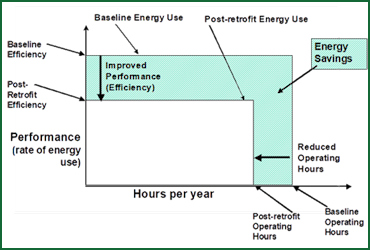
Measurement & Verification (M&V)/ Monitoring Based Commissioning (MBCx)
KMEA translates sustainability goals into specific projects by answering the question of what essential factors and action steps must be considered to optimize social, environmental, and financial benefits from real estate. The execution of a successful sustainable campus program depends on aligned goals, strategies, and tactics as well as the way in which this change management is to be integrated and executed.
Thoughtful design and construction prepare projects for resiliency, and then the proof is in how the building operates when maintained and occupied by real people. Recognizing this, the most successful facilities continue to employ cost-effective measurement and verification (M&V) systems to track actual energy use. This option can cost a fraction of traditional Building Management System-based (BMS-based) monitoring.
KMEA's services include:
Measurement and verification support during design phases, including:
- Gathering project information (metering, circuiting, electrical infrastructure, etc.)
- Providing monitoring design strategies for new or existing buildings including identifying circuits/panels to monitor, assistance with specifying equipment, coordination of equipment installation, and coordination of data gathering
- Writing a measurement and verification plan and complete documentation for LEED submittal (if applicable)
Measurement and verification support during construction phase, including:
- Reviewing M&V equipment and building automation system submittals
- Reviewing any construction changes related to M&V equipment
- Support for commissioning of M&V equipment
- Support for integration of M&V equipment into building automation system
Support during implementation period, including:
- Comparing actual consumption to predicted consumption by end user (plug load; heating, ventilation, and air conditioning; lighting; etc.)
- Creating a Final Report at the end of implementation year
- Creating a monthly energy use predictions template
- Gathering as-built mechanical, electrical, and plumbing drawings, building occupancy and scheduling data, and utility/meter information
- Reviewing and evaluating monthly energy use data, comparing to predictions and to utility data and providing Monthly Summary Reports
